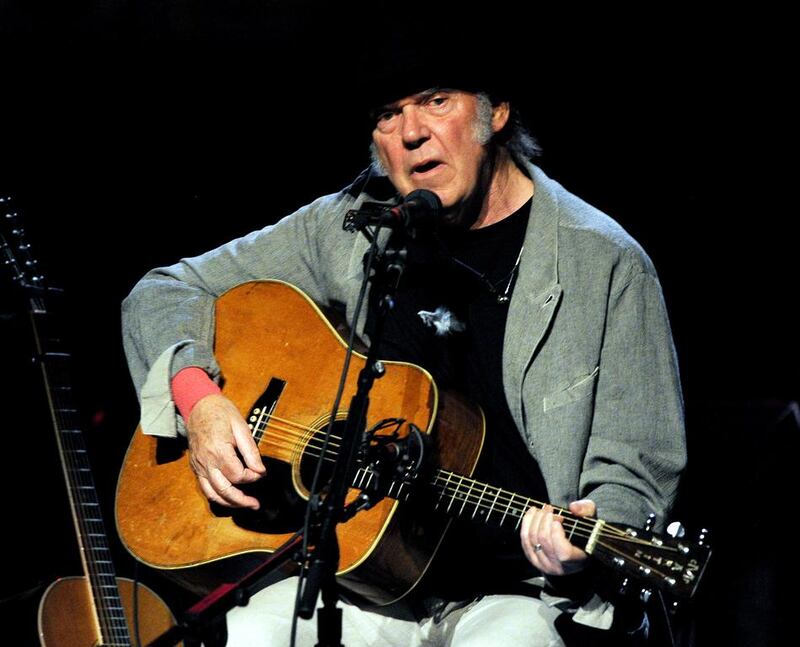Storytone
Neil Young
(Reprise)
Three stars
It’s no news that Neil Young appears to gain a perverse pleasure in confounding his fans – he was, after all, once sued by his own record company for making “unrepresentative” music – but as the Canadian rock legend turns 69 tomorrow, Young can look back on what may be his weirdest year yet.
To recap: in the past 12 months Young has led an anti-fracking campaign against his country's government, launched the crowd-funded music download service Pono, hosted his first art exhibition, penned a memoir about cars and released A Letter Home, an album of crackly solo covers made on a 1947 straight-to-vinyl fairground recording booth, owned by Jack Black. And in August, Young filed for divorce from his wife of 36 years, Pegi. And yet still Storytone has the ability to baffle.
It represents two notable career firsts: Young’s first unaccompanied album of original material – and also his first LP alongside a 92-piece orchestra, the album’s insightful/indulgent concept to present two takes of the same 10 songs, recorded in opposing big/small settings.
The solo disc exposes the best of Young, the fragile front-room intimacy suiting his wispy, wavering voice, wheezing harmonica and sparse songwriting. When I Watch You Sleeping is vintage folky Neil, while the affectingly mournful Tumbleweed, a rare outing on the ukulele, is sublime.
The album's spiritual centrepiece is the protest anthem Who's Gonna Stand Up?, a battle-storming, earnest environmental call to arms from an ageing hippie who once penned a whole LP inspired by his experimental hybrid-fuelled Lincoln Continental (2009's surprisingly sprightly Fork in the Road). Rehashing that album's themes but lacking half of its verve, the mid-tempo Greendale-esque blues dirges I Want to Drive My Car and Like You Used to Do are instantly forgettable. And never the most poetic of wordsmiths, the album's five piano ballads suffer at times from clumsy phrasing. In short, the solo side is Twilight Neil on autopilot, filed neatly next to Prairie Wind or Are You Passionate?
However, it's the orchestral disc where things go wrong. With a background in movies, Michael Bearden's sugary, string arrangements are the conceptual antithesis of Young's ragged storytelling, while Neil's cracked, technically weak voice is an absolute liability in this generically sheened setting. A further three numbers are given the big-band blues treatment, recalling 1988's misjudged This Note's For You.
For Young fanatics, there’s a certain amount of intrigue to be found on the solo disc and a huge amount of novelty on the second. But as a package, this sadly ranks alongside Young’s mid-1980s genre experiments as one of the weakest releases of an otherwise formidable 35-album career.
rgarratt@thenational.ae





